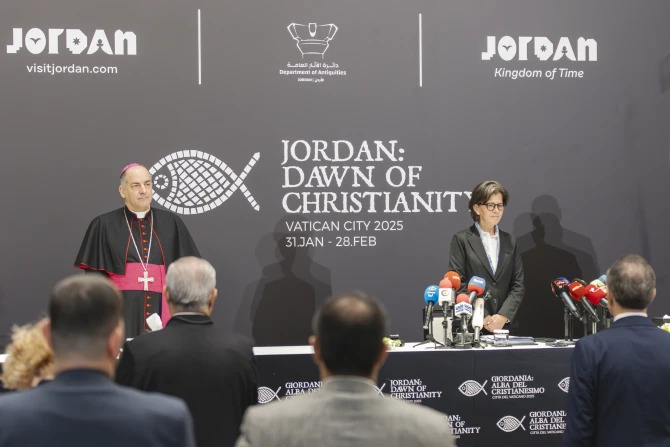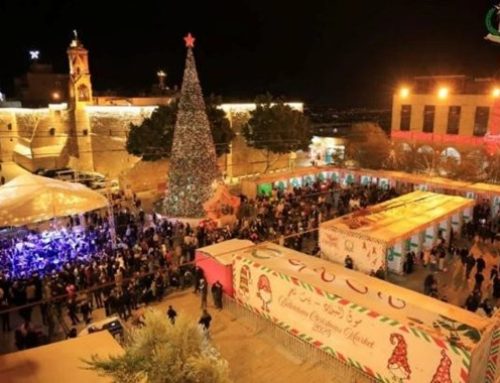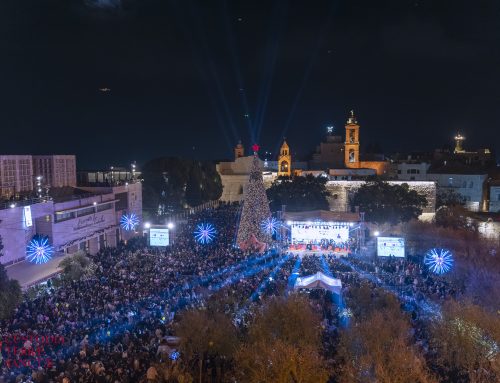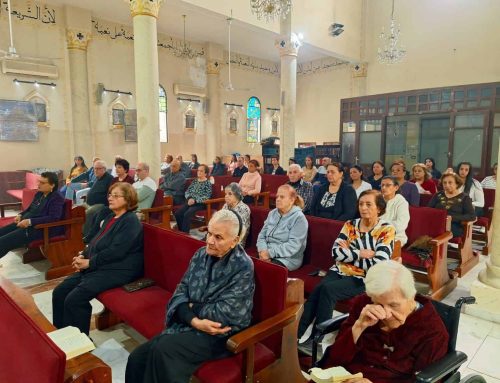The Jordanian Ministry of Tourism and Antiquities announced this week the opening of a historical exhibit in Vatican City titled “Jordan: Dawn of Christianity.” This pioneering event aims to explore the origins of Christianity in Jordan.
The announcement was made at a special press event at the St. Regis Hotel in Amman on Wednesday, Jan. 8, and provided a glimpse into the upcoming exhibit, which will run Jan. 31 through Feb. 28 in the Vatican’s Palazzo della Cancelleria.
During the press conference, Jordanian Minister of Tourism and Antiquities Lina Annab said the exhibit, organized in cooperation with the Vatican, marks a significant event coinciding with the 30th anniversary of diplomatic relations between Jordan and the Vatican.
The exhibit will feature over 90 unique artifacts ranging from intricate mosaics to ancient symbols, offering an interactive experience for visitors to learn about the evolution of Christianity in Jordan — from the baptism of Jesus Christ, through the Byzantine era, and to the Islamic and Hashemite periods.
The exhibit will also celebrate the 2025 Jubilee under the theme “Pilgrimage of Hope.”
Annab highlighted one of the exhibition’s key pieces — the fish symbol — considered one of the rarest symbols in Christian history, noting that the exhibit serves as an open invitation for the world to discover the history of religions in Jordan.
Visitors to the exhibit will be taken on a journey to explore Jordan’s prominent holy sites, which are key stations along the Vatican-recognized Christian pilgrimage route. Notable sites include the Hill of Elijah, the Mountain Church in Anjara commemorating the Virgin Mary, Mount Nebo where the prophet Moses is said to have died, the castle of Machaerus where John the Baptist was martyred, and the baptism site of Jesus Christ.
Annab emphasized that the exhibition sends a powerful message from Jordan to the world, highlighting values of peace and coexistence among religions. She added that the exhibition would enhance Jordan’s position as a leading destination for Christian pilgrimage.
Annab mentioned that the exhibition highlights “the ongoing dialogue among the diverse components of the Jordanian society,” providing a unique opportunity for the world to see Jordan as a homeland for Christians from various parts of the globe. It also offers a platform to explore the kingdom’s principal Christian sites, thereby boosting Jordan’s status as a prominent tourist and religious destination.
The papal ambassador to Jordan, Archbishop Giovanni Pietro Dal Toso, attended the press conference and affirmed that “the exhibition will help redefine the global understanding of Christianity’s presence in Jordan,” noting that “many people are unaware of the Christian community in the kingdom.”
Dal Toso highlighted the evolution of diplomatic relations between the Vatican and the Jordanian kingdom, beginning with Pope Paul VI’s historic visit in 1964. He highlighted several reasons for the Vatican’s interest in Jordan, particularly its central role in the region as a true model of coexistence and dialogue among religions.
The ambassador noted that the exhibit coincides with the inauguration and consecration of the Church of the Baptism of Jesus Christ at the baptism site under the Latin Patriarchate, presided over by the secretary of state of the Vatican City and the personal envoy of Pope Francis, Cardinal Pietro Parolin, on Friday, Jan. 10.
The head of the Jordanian Tourism Promotion Authority, Abdul Razzaq Arabiyat, stated at the press conference that the exhibit offers an interactive experience for its visitors and mentioned plans to bring the exhibition to several locations in France, Portugal, and Greece to enhance cultural links between Jordan and the world.
By Sanad Sahelia / catholicnewsagency






